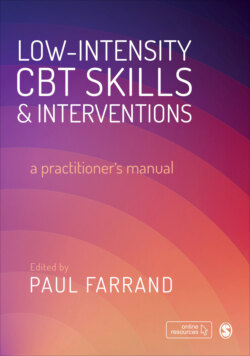Читать книгу Low-intensity CBT Skills and Interventions - Группа авторов - Страница 33
На сайте Литреса книга снята с продажи.
Training and Supervision
ОглавлениеWithin the IAPT stepped care model, significant focus is placed upon ensuring that the Step 2 LICBT and Step 3 psychological therapy workforce have received high-quality competency-based training. Training is informed by a nationally specified HICBT (Liness and Muston, 2011) and LICBT training curriculum (University College London, 2015), itself informed by a CBT competence model (Roth and Pilling, 2007a). LICBT Psychological Therapy Practitioner training is supplemented by educator and student materials (Richards and Whyte, 2011) that have informed several features of this training manual. Ensuring accreditation of trainers and training programmes also helps to enhance fidelity to treatment delivery of LICBT interventions (Hides et al., 2010). Furthermore, separate curricula to inform training for the high- and low-intensity CBT workforce potentially reduces the likelihood of therapeutic drift, helping to maintain evidence-based practice (Waller, 2009). Differences between HICBT and LICBT also exist with respect to the types of supervision received (Chapter 9).
